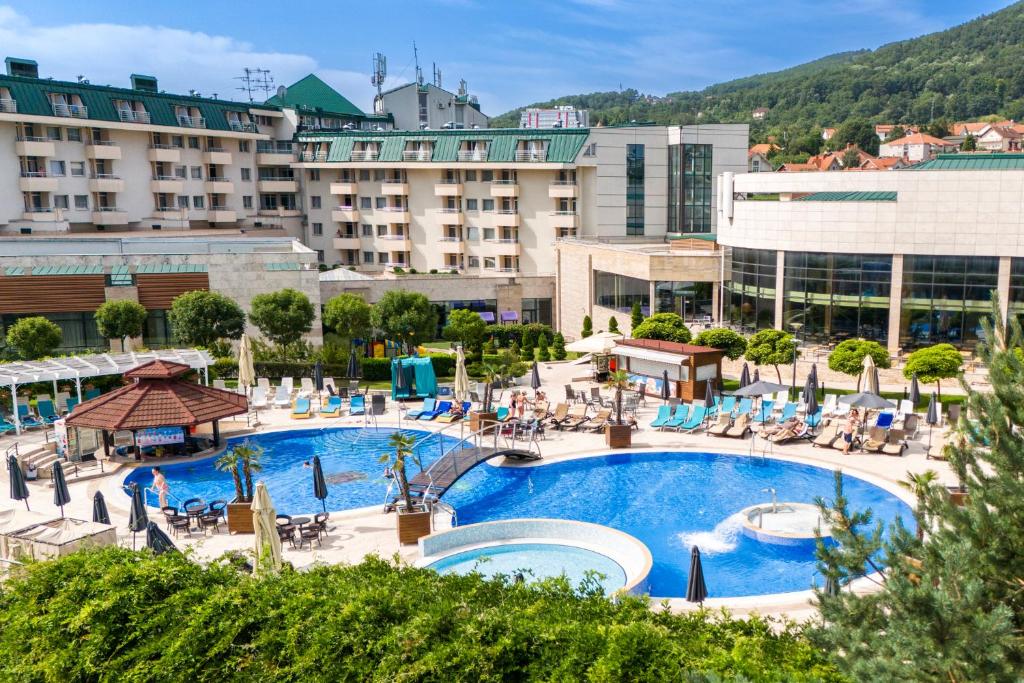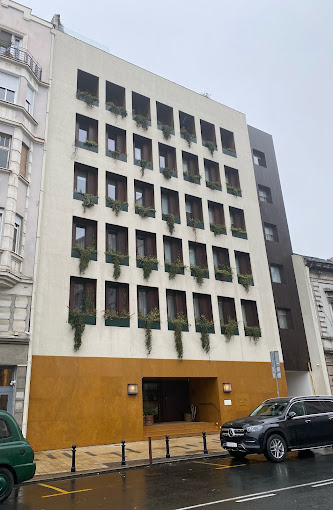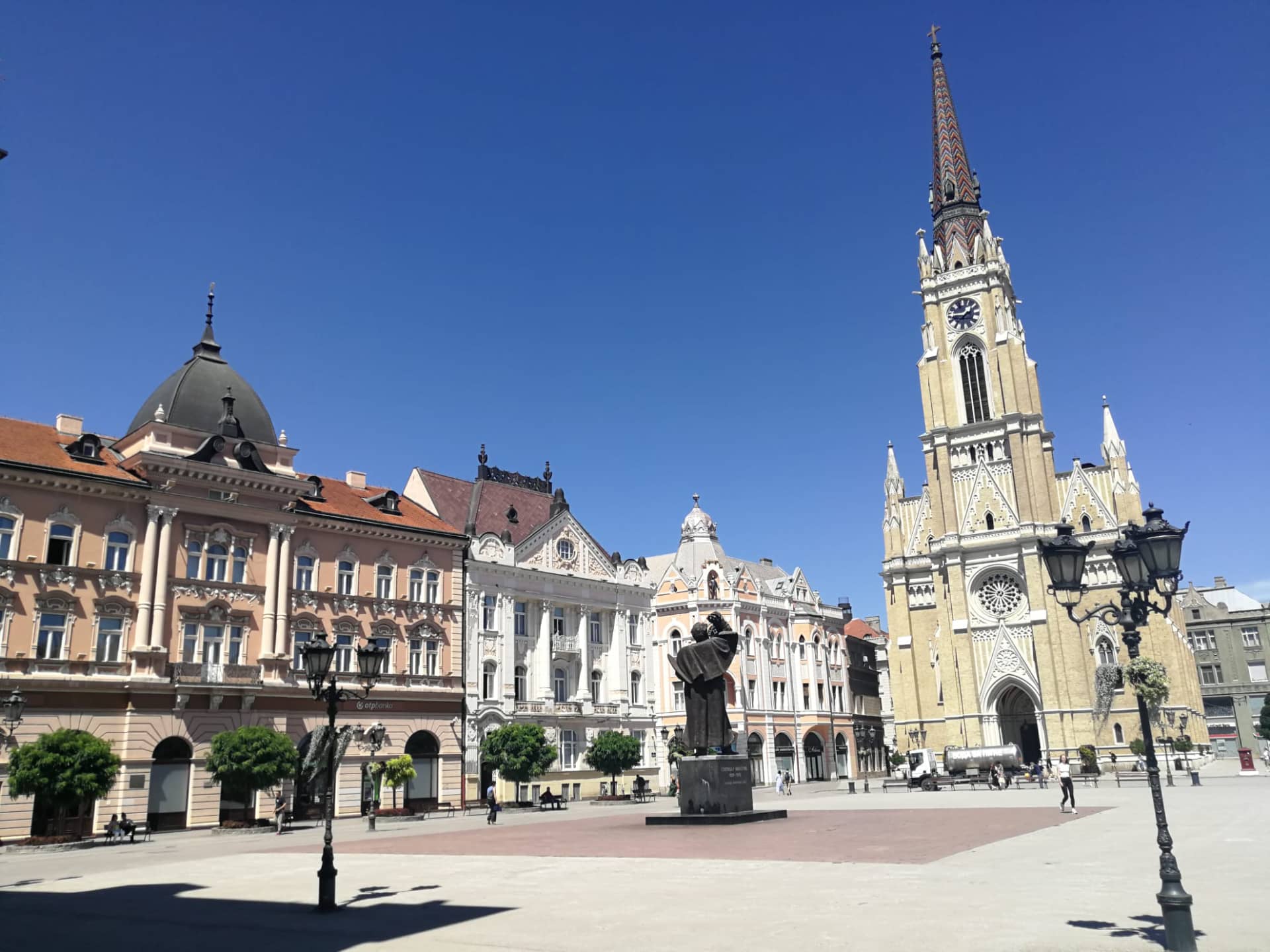Popular Hotels in Serbia
The St. Regis Belgrade
Serbia
$450The St. Regis Belgrade is a luxurious hotel situated within the iconic Kula Belgrade, a 40-story tower that stands as a centerpiece of the Belgrade Waterfront development. Occupying the first nine floors of this architectural landmark, the hotel offers guests unparalleled views of the city and the confluence of the Sava and Danube rivers.Accommodations: The hotel features 119 elegantly appointed guest rooms, including 17 suites and a spacious 192-square-meter Presidential Suite. Each room is designed with a sophisticated palette of soft earth tones and blues, reflecting the essence of Belgrade. Guests can enjoy panoramic city views, complemented by modern amenities and the signature St. Regis butler service, ensuring a personalized and luxurious stay. Dining and Amenities: Guests can indulge in a variety of culinary experiences at the hotel's restaurants and bars, each offering unique flavors and atmospheres. For relaxation and wellness, the hotel provides a full-service spa, an indoor pool, and a state-of-the-art fitness center. Additionally, the St. Regis Bar offers a sophisticated setting for guests to unwind with signature cocktails.Meetings and Events: The St. Regis Belgrade boasts versatile meeting rooms and event spaces, including the Astor Ballroom, ideal for conferences, weddings, and special occasions. Equipped with modern technology and supported by a dedicated events team, the hotel ensures seamless and memorable events.Location: Located at Nikolaja Kravcova 1a, the hotel is centrally positioned in Belgrade, offering easy access to cultural landmarks, shopping districts, and vibrant nightlife. The strategic location makes it an ideal choice for both business and leisure travelers seeking to explore the rich history and dynamic culture of Serbia's capital.
Book NowMövenpick Resort and Spa Fruske Terme
Serbia
$480Mövenpick Resort and Spa Fruske Terme is a luxurious retreat nestled on the slopes of Fruška Gora, Serbia's oldest national park. Located in Vrdnik, approximately 70 km from Belgrade and 25 km from Novi Sad, the resort offers a serene escape amidst nature.Accommodations: The resort features 201 elegantly designed rooms and suites, each equipped with private balconies, flat-screen TVs, complimentary Wi-Fi, minibars, and coffee/tea-making facilities. Guests can choose from various room types to suit their preferences. Dining Options: Guests can indulge in diverse culinary experiences across seven on-site restaurants and bars, offering Serbian and international cuisines. The establishments emphasize fresh, locally sourced ingredients, providing a farm-to-table dining experience.Wellness and Spa Facilities: The resort boasts Serbia's largest wellness and spa center, spanning over 20,000 square meters. Facilities include 11 indoor and outdoor thermal pools, 12 types of saunas, and a range of treatments designed for relaxation and rejuvenation.Meetings and Events: For business and event needs, the resort offers the country's largest hotel congress center, featuring 12 versatile meeting halls equipped with modern amenities, suitable for conferences, seminars, and social gatherings.Recreational Activities: Beyond the wellness facilities, guests can enjoy activities such as archery, an arcade/game room, and a playground for children, ensuring entertainment for all ages.Mövenpick Resort and Spa Fruske Terme seamlessly combines Swiss hospitality standards with Serbian warmth, offering guests a tranquil and luxurious escape amidst the natural beauty of Fruška Gora.
Book NowHotel IZVOR
Serbia
$250Hotel Izvor is a luxurious 5-star spa and wellness resort located in the heart of Šumadija, within the Bukovička Spa in Aranđelovac, Serbia.The hotel offers modern, air-conditioned rooms equipped with LCD TVs, DVD players, balconies, minibars, and bathrooms featuring bathrobes and slippers. Some rooms also include private hot tubs.Guests can enjoy a large spa area with indoor and outdoor pools, various saunas, steam baths, and other wellness facilities.The hotel also features an aqua park on-site. For dining, Hotel Izvor offers multiple restaurants and bars, providing a variety of culinary experiences.Additionally, the hotel is equipped to host conferences and events, catering to both business and leisure travelers.Located next to Bukovička Park, the hotel provides a tranquil and scenic setting for guests.Guests can also explore nearby attractions such as Oplenac, Orašac, and 14th-century monasteries, with opportunities for wine tastings and daily excursions.
Book NowSquare Nine Hotel Belgrade
Serbia
$500Square Nine Hotel Belgrade is a distinguished luxury hotel located in the heart of Belgrade, Serbia. Situated at Studentski trg 9, the hotel is within walking distance of prominent attractions such as the Kalemegdan Fortress, the National Theater, and the National Museum.Accommodations: The hotel offers a selection of 45 rooms and suites, each thoughtfully designed to provide comfort and sophistication. Guests can expect amenities such as hardwood floors, Treca de Paris beds, Pratesi linens, and a curated collection of antique and designer furnishings. Modern conveniences include complimentary Wi-Fi, flat-screen TVs, and well-appointed bathrooms.Dining: Square Nine features two notable dining venues:The Square: Serving international cuisine in an elegant setting, this restaurant is ideal for both casual meals and formal dining experiences.Ebisu: Located on the hotel's rooftop, Ebisu offers authentic Japanese cuisine complemented by panoramic views of Belgrade.Wellness and Spa: Guests seeking relaxation can visit the hotel's spa, which includes an 18-meter indoor pool, a Japanese Ofuro tub, steam baths, saunas, and a well-equipped fitness center. A variety of massage and beauty treatments are also available.
Book NowHyatt Regency Belgrade
Serbia
$185The Hyatt Regency Belgrade is a five-star hotel situated in New Belgrade, Serbia's vibrant business district. This premium hotel offers convenient access to the city center and is approximately a 15-minute drive from Nikola Tesla International Airport.Accommodations: The hotel boasts 302 luxury rooms, including various suites such as Presidential, Royal, Executive, and Diplomatic. Each room is designed to provide comfort and modern amenities to both business and leisure travelers. Dining Options: Guests can enjoy a variety of dining experiences within the hotel: Metropolitan Grill & Bar: Offers a diverse menu in a contemporary setting. Focaccia Mediterranean Restaurant: Specializes in Mediterranean cuisine, providing a unique dining experience.Facilities and Services: The Hyatt Regency Belgrade provides a range of facilities to enhance guest experiences, including: Spa and Wellness Center: Features various treatments and amenities for relaxation. Meeting and Event Spaces: Equipped to host business conferences, weddings, and other events.Fitness Center: Offers modern equipment for guests seeking to maintain their fitness routines.Location Highlights: The hotel's strategic location allows easy access to several key attractions and facilities: Sava Center: A prominent convention, sports, entertainment, and fair venue, located nearby. Shopping Malls: Close to Ušće and Delta City shopping centers, providing extensive shopping and entertainment options.
Book NowViceroy Kopaonik Serbia
Serbia
$170Viceroy Kopaonik Serbia is a five-star resort located in Kopaonik Village, nestled within the scenic Kopaonik National Park. This 119-room ski-in, ski-out retreat combines modern luxury with the natural beauty of the Serbian mountains, offering guests a unique and upscale experience.Accommodations: The resort features 119 stylishly appointed rooms and suites, designed to reflect the dramatic mountain landscape. Each room offers modern amenities such as spacious work desks, flat-screen TVs, Nespresso coffee machines, and private bathrooms. Guests can enjoy breathtaking views of Kopaonik National Park and the surrounding mountains from their rooms.Dining and Nightlife: Viceroy Kopaonik Serbia offers a variety of dining options: Mountain Kitchen: An elegant brasserie serving breakfast and dinner, offering a healthy menu and the convenience of fixed-price meals during peak hours.Pique Ski Bar: A ski-in, ski-out lounge serving light bites and handcrafted cocktails, perfect for après-ski relaxation with live music and stunning scenic views.Peroko: An Asian-fusion restaurant offering innovative sushi dishes and creative sake-based cocktails, providing a unique dining experience in the Serbian landscape.The Library: A serene spot for afternoon tea, allowing guests to relax and watch the world go by.
Book Now
.jpeg)



.jpg)
.jpeg)
.jpeg)
.jpeg)



















